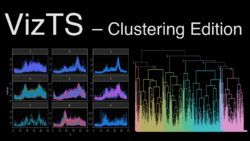Project Groups
|
|
|
|
|
|
Please change Your Team name to your project topic and change student name to your own name.
Project Groups
Please change Your Team name to your project topic and change student name to your own name
| Project Team | Project Title/Description | Project Artifacts | Project Member |
|---|---|---|---|
|
Auntie, Stall Rental How Much R? Hawker stalls are a staple in the Singapore food scene. With the recent furore over hawker stall management and outrageous stall bids, do hawkers actually know what the market rate of hawker stall rentals and how much to bid? Our project aims to help existing and aspiring hawkers understand hawker stall rentals through appropriate visualisations and to analyse the factors that affect stall rentals. Our app, built in R Shiny, will allow users to explore Singapore’s publicly managed hawker centre rental data. Users will be able to view price trends, lookup prices of hawker stall rentals in the selected hawker centre. We will also include a geo-weighted regression and users can use our app to see how different location based variables affect the rental price of the hawker stalls. |
| ||
|
Casualties of Commodity Trade War
Our interactive R Shiny application will allow policymakers to identify trends, patterns and dependencies in commodity trade at geographic, regional and economic communities; and identify economies that are sensitive to trade, along with the particular commodities that give rise to this sensitivity. |
| ||
|
Welcome to Singapore! - Insights on Tourists Arrival and Expenditure on the Sunny Island Singapore has been fast emerging as a global tourism destination, with visitors arrival and tourism receipts hitting record high year on year.
From the data extracted from CEIC, we strive to create new observations that can assist businesses and enterprises to make an informed decision on tourism management. Leveraging on the insights generated, these enterprises and business will be in a better position to tap on the growing tourism revenue. Guiding the tourism industry players in creating impactful services, it will leave a profound and lasting impression on travellers.
|
| ||
|
R-CsI: An R-ConSumerInsights Business Application to better understand Customers Technology in today's world is advancing faster than ever before. With the concepts of digital transformation, the Internet of Things (IoT) and cloud computing becoming more and more prevalent, it has also become far easier to obtain and access large amounts of data on a variety of consumer activities in an ever-widening list of industries. By using various visual, statistical and data mining techniques on these data sets, businesses will be able to harness the power of hindsight with regards to customer behavior, allowing them to learn more about the activities, purchases or other transactions made by their customer base. Businesses will then be able to use the insights gleaned from data exploration and discovery to address fundamental issues, such as customer acquisition, development and retention. This project aims to discover insights on the segments that exist in a selected retailer’s customer base, as well as identify groups of products that are highly associated during purchase. This will be done through the analysis of Dunnhumby - The Complete Journey dataset obtained from the Dunnhumby data science company that tracks the purchases of 2500 households over 2 years. Upon understanding the differences among consumer groups as well as developing a better understanding of the patterns and hidden relationships in the transactional data, it is our hope that businesses will be able to obtain invaluable insights into its customer profile, and can focus its efforts on developing more effective customer-based strategies. |
| ||
|
Visual Application for Time Series Clustering Time series clustering is to partition time series data into groups based on similarity or distance, so that time series in the same cluster are similar. Time-series datasets contain valuable information that can be obtained through pattern discovery. Clustering is a common solution performed to uncover these patterns on time-series datasets. It represents the time-series cluster structures as visual images (visualization of time-series data) can help users quickly understand the structure of data, clusters, anomalies, and other regularities in datasets. Time series clustering has a wide variety of strategies and a series specific to Dynamic Time Warping (DTW) distance. The dtwclust is a package of R statistical software so that have many of the algorithm implemented in this package that are specifically tailored to DTW. A great amount of effort went into implementing them as efficiently as possible, and the functions were designed with flexibility and extensibility in mind. As such, the dtwclust is a package with its functions comparable to, if not more superior than the expensive commercial-of-the-shelves analytical toolkit such as SAS Enterprise Miner. However, till date, the usage of dtwclust package tends to be confined within academic research as it required intermediate R programming skill. The project aims to provide a user-friendly interface to dtwclust package by using R Shiny framework. The user-friendly interface design allows casual users to import data, manage, explore, calibrate, visualise and evaluate clusters without having to type a single line of code. In addition to that, the application aims to incorporates graph visualization to enhance data exploration, to aid in the interpretability of the outputs of the clusters and to investigate the similarities or dissimilarities within the cluster. |
| ||
|
Gee-Whiz: Singapore and the suppliers that make her tick Singapore is recognized worldwide for its efficient and clean public service. Ranked 6th in the world in a corruption perceptions index by Transparency International, the incidence of public sector corruption here remains one of the lowest in the world. Efforts to maintain openness and transparency in all government activities can be witnessed throughout the established systems and processes. GeBIZ is Singapore’s public eProcurement portal for suppliers to bid on tenders published by various agencies and ministries. While public agencies enjoy the economies of scale which come with the electronic purchase of goods and services, suppliers have broader access to government tenders and quotations. GeBIZ encourages greater transparency together with fair and open market competition as all procurement operations are published online. Using network analysis and other visualization techniques, we will explore the relationships between suppliers and the agencies with which they trade. Are there unknown biases in the tendering process which favors certain suppliers over others? Are there strong relationships between certain ministries and suppliers for specific types of projects? Are some suppliers providing such high value services to the government as to pose a concentration risk? Join us as we find out. |
| ||
|
Corn: The A-maize-ing Crop Corn or Maize (as called in some countries) was first grown in ancient Central America. Corn or Maize (as called in some countries) was first grown in ancient Central America. Corn has become a staple in many parts of the world, providing not only substances that we fill our belly with, but also act as the raw ingredient for corn ethanol, animal feed etc. The Corn Belt in the US has about 96,000,000 acres of land just for corn production, and have characteristics of leveled land, fertile and highly organic soils. Corn has been known to be able to grow in a wide range of climatic conditions, hence it would be a challenge to set precise conditions for corn production. Hence, breeders have been experimenting with various types of corn hybrids, each of them specifically created to have high yield despite the environment it is planted in. Over the years, the farmers have been using trial and error method to identify the best hybrids to plant by planting each of these hybrids in different locations with different environmental factors; this process has been proven to be slow and not very effective. Using visualisation tools such as geofacet and isoline graphs would give a good overivew on which part of the Corn Belt has better yield. We would implement GWmodel to generate our prediction model. This model aims to explore the meteorology and geographical factors that makes a corn, the a-maize-ing crop that we know today, which would benefit the corn breeder greatly. |
| ||
|
Visualizing Future of Crowd Funding with 余额宝 Yu’e Bao (余额宝) is an investment product offered by Alipay (支付宝), a mobile and online payment platform established by China’s multinational conglomerate Alibaba Group. In June 2013, Alibaba Group launched Yu’e Bao, in collaboration with Tianhong Asset Management Co., Ltd., to form the first internet fund in China. Since then, Yu’e Bao has become the nation’s largest money market fund and, by Feb 2018, has US$251 billion under its management. In Chinese, Yu’e Bao represents “Leftover Treasure”. Alipay users can deposit their extra cash, for example, leftover from online shopping, into this investment product. The money will be invested via a money market fund with no minimum amount or exit charges, with interest paid on a daily basis. While major banks offer 0.35% annual interest on deposits, Yu’e Bao may offers user 6% interest with the convenience and freedom to deposit and withdraw anytime via Alipay mobile app. Thus, Yu’e Bao became extremely popular in China.
|
|
| |
|
Visualization on China Stock Market Data In our general impression, when we access a trading platform to make investment, we need to deal with plenty of price data to make our investment decision, which includes the opening price, closing price, highest price of the day and lowest price of the day. And the K line is the most popular visualization chart of the stock data for investor to refer to. However, if a fresh investor is not very professional and sensitive to the financial data, he may be distracted by various price data and are not able to make appropriate financial decision. Therefore, visualization of stock market data is quite useful for technical stock market analysis and will help investors to gain a comprehensive understanding on how the stock market is changing, which lead to our analysis objective for this project. |
| ||
|
China Stock Data Visualization The stock market data is seamless endless and widely available on the web. The movement of stock exchange depends on a complex mix of factors and difficult to predict. Exploring the patterns of stock market data, using different data visualization skills will be largely helpful for stock market investors and traders. This project aims to provide advanced data visualization of stock market data to reveal the hidden pattern of market movement. |
| ||
|
Visualization Analysis of Citi Bike Data of New York City Over the past decade, bicycle-sharing systems have been growing in number and popularity in cities across the world. Citi Bike is New York City’s bike share system and the largest in the nation. Citi Bike launched in May 2013 and has become an essential part of our transportation network. It’s fun, efficient and affordable-not to mention healthy and good for the environment. In this project, we will perform an exploratory analysis on data provided by Citibike_stations and Citibike_trips and illustrate the power of visual analysis in using R shiny. We will build a user-friendly application to help riders to find out which station is most convenient for you to return and borrow bikes? From the Citibike’s point of view, it is critical to understand which station the most popular bike stations is and think about the geographical distribution of bike stations for Citi Bike. |
|











